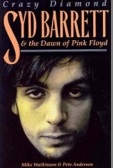Diana
Here is my article marking the 10th anniversary from the death of Princess Diana. It appears in this Saturday's Weekender from The Times (of Malta).
DIANA STILL FASCINATES
Princess Diana died in a car crash 10 years ago. However she lives on and will continue to do so. Toni Sant takes a different look at the People's Princess who changed and marked the royal family forever
by Toni Sant
Princess Diana deserves coverage because people still love her. This is the reason you're reading yet another feature about Diana. While some people may genuinely have had more than enough of Diana 10 years on from the fatal car accident that left her, her boyfriend and their drunk driver dead, others will undoubtedly consider it near blasphemous that anyone can do anything but love her.
Before I started writing these few words about Diana, I thought there was nothing really new to add.
Then I started to do some research and realised that like Elvis Presley, Marilyn Monroe, Jim Morrison and a handful of other dead iconic celebrities from the entertainment world, she will possibly live on forever in a huge hall of referential mirrors.
The most interesting of all these mirrors, for me, is not in one of the never-ending stream of books published about her, to say nothing of the countless newspaper and magazine articles.
Princess Diana is mostly on my mind this year through the daring comedic bravado of Ricky Gervais, who is known in Malta mostly through his BBC series The Office. The British comedian has written (and appears in) an episode of the popular animated TV series The Simpsons. This episode, which first aired in the United States and Britain this past spring, dares to lampoon Lady Di in a way that hasn't been seen since Spitting Image delighted millions in the Commonwealth. I would argue that this new joke is funnier because it is very subtle and is inserted almost exclusively for the cognoscenti of popular culture.
In Homer Simpson, This is Your Wife, Gervais appears as a cartoon character named Charles Heathbar, based on David Brent, the regional manager from The Office. Marge Simpson moves into Heathbar's house in a plot involving a reality TV series called Mother Flippers where husbands swap wives for a predetermined period of time.
Charles falls in love with Marge and sings her a song he wrote for her entitled Lady Blue. The blue in the title is a pun on the way someone feels when they're sad or lonely and Marge's hair colour. Gervais has described Lady Blue as the worse song you could possibly write. The lyrics include these rhyming verses:
Lady, when you go away
I feel like I could die
Not like dye like your hair is dyed
But die Like Lady Di
And not like Di like her name is Di
But die like when she died
But lady just like Lady Di
Be my princess tonight
But don't die.
The direct allusion in the song words is not the only reference to Princess Diana in this episode. While Ricky/Charles sings this song, the cartoon character's legs are briefly seen through his kimono just as he stands in front of the fire place in his house, echoing the now-famous controversial 1981 photo of Lady Di standing in the garden of the school where she worked when she first met Prince Charles, with the sun behind her revealing the outline of her long, amazing legs through her chiffon skirt.
No one should be surprised that any mention of Diana in The Simpsons in not reverential. To expect otherwise from the best thing on television since Prince Charles and Lady Di's wedding video is to believe that a scorpion would never sting a frog if asked to help it cross the river. What's more, this was not the first time her name was taken in vain in The Simpsons. Way back in an episode produced in 1993, professional drunkard Barney Gumble (voiced by Dan Castellaneta) mistook a pile of rags for Princess Di. Interestingly, this sequence was edited out of all post-1997 screenings on British TV.
Closer inspection of the supposedly respectful goings-on reveals that there's more than meets the eye to the ever-growing cult of the dead Diana. Her following now is only superseded by the media interest she generated during her life as the future queen (mother) of England. An obvious part of this interest is fuelled by money. As it was during her adult life so it is after her death. The paparazzi hounded her not (just) because of her beauty or the good causes she championed but because any magazine or newspaper bearing her picture on the cover automatically sold more copies. One good picture of Diana would change a photographer's bank account considerably. An exclusive picture could change the photographer's lifestyle completely.
This racket goes on after her death in a slightly different guise. New photos of Diana are (sadly) not possible. Yet her image and re-inventions of how to present her (an ill-fated monumental fountain, books, a memorial concert, an anniversary commemoration... what's next?) moves money in amounts that are close to or even larger than the entire economy of most African countries or small nations like Malta.
The international mainstream media's agenda is dictated by the bottom line. The days of strict adhesion to ethical codes of conduct are apparently gone now. It is often more cost effective to pay fines and suffer other post-event consequences than to lose out on the income generated from previously unheard of depictions of the British royal family. For every prestigious award-winning film like The Queen, we get two made-for-TV movies like Whatever Love Means (depicting the Charles-Diana-Camilla triangle) or Diana: Last Days of a Princess (including a slightly fictionalised account of Diana's relationship with the al-Fayed family). It is safe to assume that the British monarchy is now treated by large media corporations just like any other rich non-royal dynasty. Their ordinary affairs - romantic, financial or otherwise - are covered in ways that were unheard of just a couple of decades ago.
Royal observers will not be mistaken for noting that Diana's legacy is partly (some would argue in large part) responsible for this shift in distance between titular rulers and the media. When Channel 4 recently aired previously unreleased photos from the car crash scene, they did so in spite of a letter from Princes William and Harry asking them not to. Whether the princes should be made to endure all this is another matter altogether. They can't help the fact that they were born who they are. Unlike Diana, they have no choice on whether to attract public interest in whatever they do. Ironically, this is truer now than before their mother played the media game like no other member of the royal family before or since. Her self-promotion techniques have another unintended consequence than the ones she realised herself during her life in the limelight. Her sons cannot get away from the media's attention, even if they choose to seclude themselves from anything not directly related to their royal duties. They attract media attention because they are royal heirs but more so because they are, and will forever be, Diana's children.
Books have so far not pushed the proverbial line as much as the popular press and television in the way they deal with Diana. She is rarely the protagonist of the narratives where she appears, unless it is an out and out biography. David Baddiel's novel on which the ITV/Granada Television movie Whatever Love Means is based, has Diana appear only in conversations of fictional characters. By contrast, in the TV movie Diana: Last Days of A Princess, the actress playing Diana says things that any observant fan will recognise as implausible on the real princess's lips.
Tina Brown's new biography of Diana clearly indicates that books, however, are not far behind. Brown's Diana takes liberties with the truth that would make speculative biographers like the late Albert Goldman (famous above all for his very subjective assumption-filled biography of John Lennon) very proud. This sort of mirror reflects more what people would like to see and hear about Diana than what's actually there.
Depictions of dead celebrities come with an artistic licence that makes their diehard fans cringe. Even supposedly respectful treatments take liberties with the truth. Oliver Stone's handling of the Jim Morrison story in his film The Doors immediately springs to mind. The more people "love" a dead celebrity, the easier it becomes for the entertainment industry to rework their image and its likenesses into situations as divorced from the truth as the fact that Malta has mountains. Just think of all the situations you've seen "Elvis" in since his untimely death 30 years ago. His hall of referential mirrors is probably the largest for any non-religious celebrity ever.
Princess Diana will not be forgotten. Her youthful looks will remain forever. No botox or air-brushing necessary. There's nothing like death to preserve and enhance beauty, fuelling our fascination with photographed icons. She will be seen and mentioned regularly in our lifetime. Accept it. After all, she was the mother of the future heir of the British monarchy. Number two and number three in line after Prince Charles are both her sons. If/when her son/s get married and have their own children, her grandchildren will be the new heirs to the British monarchy. And so it goes. Even if/when one of her (grand)children abolishes the royal family, it will be Diana's (grand)child who will have brought the royals in step with the times.
Incidentally, Ricky Gervais has been invited to write another episode of The Simpsons.
Labels: death























Links to this post:
Create a Link
Post a Comment
<< Home